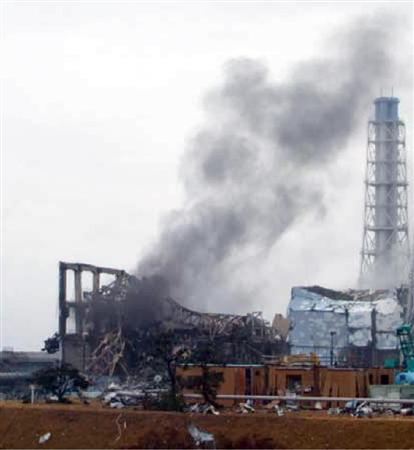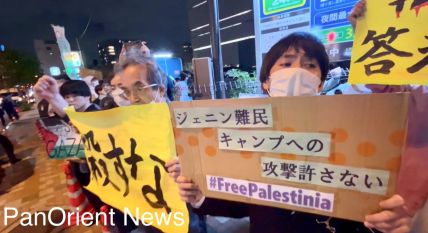|
|
Environment
Greenpeace Radiation Monitoring Team Begins ``Independent`` Fukushima Assessment
Saturday, March 26, 2011

Tokyo - (PanOrient News) A group of Greenpeace radiation experts has started on Saturday monitoring locations around the evacuation area that surrounds the crisis-stricken Fukushima Daiichi nuclear plant, "in order to assess the true extent of radiation risks" to the local population.
“Since the beginning of the Fukushima nuclear crisis, the authorities have consistently appeared to underestimate both the risks and extent of radioactive contamination. We have come to Fukushima to bear witness to the impacts of this crisis and to provide some independent insight into the resulting radioactive contamination”, said Greenpeace team leader and radioactivity safety advisor Jan van de Putte in a statement.
“By providing honest, transparent and independent analysis of the threats to public health, we aim to provide an alternative to the often contradictory information released by nuclear regulators in the two weeks since the Fukushima disaster began unfolding.”
“Any attempt by authorities to play down the effects of the current crisis should be considered a dangerous deceit. In addition to coming clean on the true dangers of nuclear power, the smartest move for governments around the world is heavily invest in energy efficiency, and redouble their efforts to harness safe and secure renewable energy sources.”
The Greenpeace team plans to spend several days documenting radioactive contamination and dose rate levels in the areas north-west of the Fukushima evacuation zone (20km radius from nuclear plant) that have been most affected by the radioactive releases.
The Japanese government on Friday "encouraged" people living within 20 to 30 kilometers of the troubled nuclear power plant in Fukushima Prefecture to leave voluntarily, citing concerns over access to daily necessities, while maintaining its directive for them to remain indoors and for residents within 20 km of the plant to evacuate.
The Nuclear Safety Commission of Japan, a government panel, also recommended voluntary evacuation the same day for residents 20 to 30 km from the Fukushima Daiichi nuclear complex, saying the release of radioactive materials from the plant is expected to continue for some time.
The agency said on Saturday that levels of radioactive materials are increasing in the sea near the plant. It said that radioactive iodine-131 at a concentration 1,250.8 times the legal limit was detected Friday morning in a seawater sample taken around 330 meters south of the plant, near the drain outlets of its troubled four reactors.
The Greenpeace team leader, Jan van de Putte (Belgium), is an experienced radiation expert who qualified at the Technical University of Delft, and has participated in environmental surveys of radioactive contamination in Russia, Ukraine, Spain, Belgium and France, according to the statement.
The team is joined by radiation expert Jacob Namminga (Netherlands) who also qualified at the Technical University of Delft, and has taken part in environmental surveys of radioactive contamination in Ukraine, Spain, and France, the statement said.
As part of the monitoring work, the team will be using a selection of standard radiation monitoring equipment including Gamma spectrometer (GEORADIS Identifier RT-30 Super Ident,) Geiger counter (Radex RD 1503,) and Contamination monitor (RADOS MicroCont.)
Photo: Smoke from Fukushima Nuclear Reactor- Courtesy of TEPCO
PanOrient News
© PanOrient News All Rights Reserved.
|
|

